
“1st Aeta Forest Food Festival. Capas Tarlac near Mt. Pinatubo. Aetas will show how to hunt bayawak, snakes, wild boar & cook food using traditional methods of the forest through customs, dances & rituals. Will also share traditional food customs with Agta, Dumagat tribes from Zambales, Quezon, Rizal.”
The text message invitation forwarded by Dondi Tawatao, a photojournalist friend who shoots for Getty Images, had me interested at once. Early the next morning we were headed to Capas, roughly 3 hours away from Manila, via a Victory Liner bus and then on a tricycle bound for Barangay Sta. Juliana. Though we initially planned to return to Manila the same day, the long tricycle ride through a winding mountain road where houses were few and far between, gave us a clue that we were probably going to be spending the night there.
“Ok din naman mag-shoot sa morning. Sunrise tapos silhouette shot sa bundok yung mga Aeta may hawak na baboy ramo, ayos,” Dondi commented in typical photographer-mode during the ride. Since it was a forest festival, we both had grand visions of the event taking place in the middle of the forest where the possibilities for dramatic shots would be endless. So our first reaction when we eventually reached a covered court with a galvanized iron sheet roof and concrete floors beside a public school on the main road was initial disappointment. “Asan yung forest?”
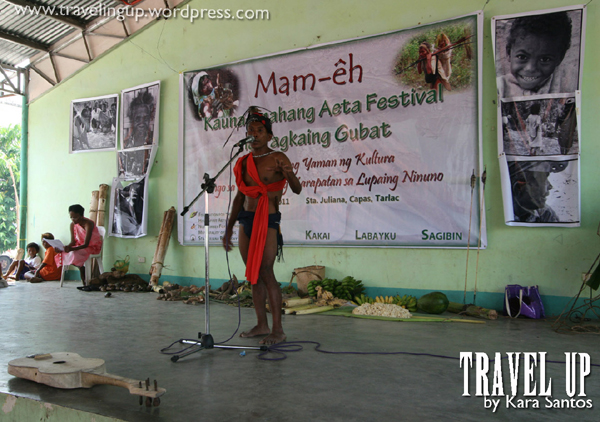
The food and event itself, however, was really something special. Dubbed “Mam-eh” (an Aeta word for sharing), the event organized by Kabalikat sa Kaunlaran ng mga Ayta, Inc. (KAKAI) and Agta-Dumagat groups LABAYKU and SAGIBIN, was the first Aeta festival organized in the country that brought together more than 350 participants from different Aeta and Agta communities from Tarlac, Pampanga, Zambales, Aurora, Quezon, and Camarines Norte.
It was a venue for them to share cultural practices, specialty food from their respective areas, the preparation of traditional food, hunting rituals, sustainable harvesting practices and food preservation techniques. Aetas showed ritual dances such as lapinding, patetet, tumigan and talipi (which refer to certain rhythms of music) to ask blessing from anitos in various situations – getting ready for a hunt, preparing for battle, a dance for curing the sick, or to show the fight for their ancestral lands.
In terms of forest food, we learned that Aeta’s primarily plant mountain rice, wild bananas, corn, and root crops like ube (a form of taro), kamoteng kahoy (cassava) and kamoteng baging (mountain yams). Wild bananas called amukaw have lots of tiny black seeds, which are strained before the edible part of the banana is made into a refreshing juice. The extract is believed to cure “pasma” (trembling hands and sweaty palms that occur after hard labor).
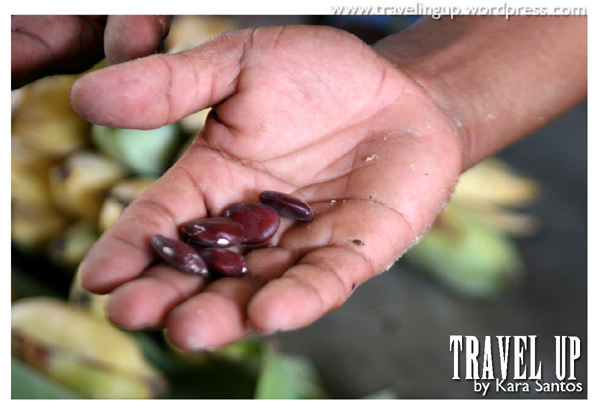
Wild beans like patani (lima/kidney beans) also form a large part of the indigenous diet of Aeta tribes in the Luzon region. The Agta and Dumagat tribes from Southern Luzon, who traveled more than ten hours to join the event, also brought with them freshwater crabs and mollusks cooked in gata and other Bicol specials such as pinangat (a blend of taro leaves, chili, meat and coconut milk) and a very spicy but delicious laing (vegetables cooked in coconut milk) which they generously shared with us during dinner.
An opening number featured a traditional hunting dance, where women sat surrounding various forest foods and a live chicken, while the men, as the traditional hunters of the tribe, danced around them to the beat of rhythmic music.
One elder tribesman carried a bow and arrow during the dance. Later someone tied the chicken to a stick and placed it towards the end of the gym floor. From a distance, the elder tribesman shot the arrow directly at the chicken, killing it instantly. An older tribeswoman picked up the dead chicken and continued the dance.
Later, I saw another woman plucking the feathers off the same chicken that was used in the dance and roasting it under a fire to add to the group’s meal.
Though baboy ramo (wild boar), bayawak (monitor lizards) or snakes weren’t brought in just for the sole purpose of us watching them being killed, the Aetas displayed their hunting skills in an archery contest. The tribesmen took aim at steady and moving targets, including a cutout of a boar tied to a string which was pulled between two posts.
Jane Austria-Young of KAKAI, the main event organizer, shared how frogs, monitor lizards, snakes and cloud rats are still part of the indigenous diet in remote mountainous villages. Tribesmen use their excellent marksmanship using handmade bows and arrows and improvised traps to catch their food. We noticed that the points in the arrows were made of sharpened nails that had been carved with a knife so that it was ridged.
According to Jenne de Beer, a field fellow at the International Society of Ethnobiology (ISE), who was among those who conceptualized the Food festival, for large gatherings such as these, they don’t encourage the hunting of wild animals. Wild boar, which thrives in mountainous areas, was brought in already cooked.
During the presentation of food from different regions, they offered us a taste of baboy ramo (wild boar) cut in cubes and tied together with bamboo string. The meat was pretty good and tasted like lechon. Too bad there wasn’t any Mang Tomas sarsa. They also served us a tapa version of boar that was a bit tough to chew and very salty. For lunch, stewed beans, fried fish and wild boar cooked in a soup (nilaga style) was served.
Wild rootcrops also form a large part of the forest diet, like labit, an elongated root crop said to have aphrodisiac properties and is considered by the katutubo as their version of Viagra. I can’t vouch for its effectivity since I only tried a bit (it tasted like bitter kamote). Tribesmen explained that another root crop, kalot, which is derived from yam that grows only in mountainous areas, could be fatal if eaten raw and highly poisonous if not cooked properly. In its uncooked form, the light yellow crop resembles some kind of soft, shredded vegetable.
Kalot undergoes an intense preparation of soaking, shredding and drying before it is finally cooked inside a hollow bamboo stalk, as we saw later that night. Once it was cooked, we were quickly offered a taste of the kalot with makeshift bamboo sticks used as spoons. Since we had nothing to lose except our lives, we had to try it. Kalot tasted a bit bland and chewy like rice and I thought it would go really well if eaten with the salty tapa to balance out the flavors.
That night, the covered courts transformed into a sort of disco-house for the younger generation when they started playing modern music. As they danced the night away, fellow photographers who we had met up with earlier in the day shared several rounds of lambanog inside the barangay guesthouse. A few opted to sleep on the benches of a nearby school where meals were served, while the rest laid out mattresses and mats on the floor of the guesthouse.
Early the next morning, we headed to the visit the nearby community to get a few more human interest shots. We thought the simple basketball court at the center of the village would have been much more scenic (in terms of photos) for the festival, but the logistics of bringing all the the people there would have been difficult.
In the community, a tribesman demonstrated for us the art of traditional fire-making. He placed wood shavings inside half a bamboo stick, rubbed two bamboo sticks together until it formed a spark in the wood shavings, and then blew on the spark until it caught on fire. Photographer Gigie tried her hand lighting a fire the traditional way, and while the wood started to smoke, it didn’t quite catch on fire. Meanwhile, Rei took home the “fire-making kit” of sticks and wood shavings and said he would practice at home. While men start fires with this method, Aeta women normally use a flint-like rock that they strike together to start a fire for cooking or for lighting their tobacco, which seems very popular with the older women.
Though shy at first, the children in the community also warmed up to us and posed for photos, eventually crowding around to see their shots on the digital camera’s screen. I was particularly happy with the photos I took of one of the little girls during our short visit.
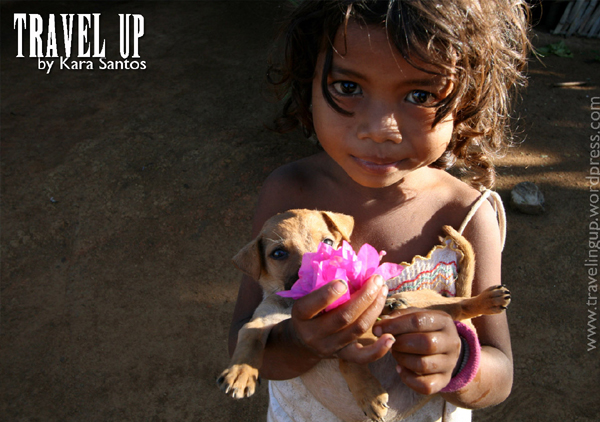
Though learning about the forest food was really interesting, it was the people that made this such a rich experience. Wherever we went, we were warmly welcomed, allowed to share in meals, and given the privilege to witness the Aeta’s rich cultural rituals and traditions. Though we didn’t get a lot of the dramatic photos we first envisioned, I think we came out of this experience with something much better.
Behind the scenes photo by Dondi Tawatao/Getty Images.
NOTE: A version of this story was first published in Sunday Inquirer Magazine. Special thanks to Jane Austria-Young of KAKAI and Princess Asuncion of Urban Poor Associates (UPA) who let us stay in the barangay guesthouse for the night.
7/15/11: UPDATE: If you want to learn more about forest foods and the way of life of the Aetas, check out this video documentary just uploaded on YouTube that was prepared by Princess Asuncion for KAKAI.
UPDATE: This blogpost was featured as Wanderlust Magazine’s Blog of the Week for September 24, 2012.
——————————————————
 This is my second entry to the Pinoy Travel Bloggers’ Blog Carnival for July 2011 with the theme “Awesome Food Experience while traveling in the Philippines” hosted by Anton Diaz of Our Awesome Planet.
This is my second entry to the Pinoy Travel Bloggers’ Blog Carnival for July 2011 with the theme “Awesome Food Experience while traveling in the Philippines” hosted by Anton Diaz of Our Awesome Planet.

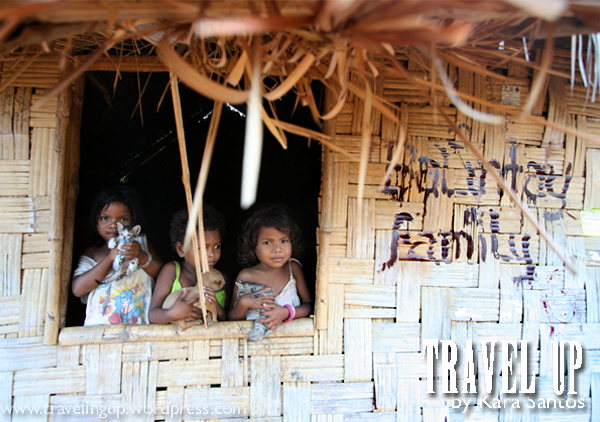
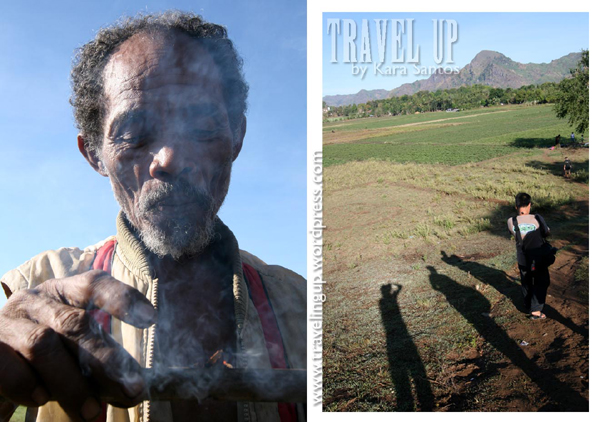
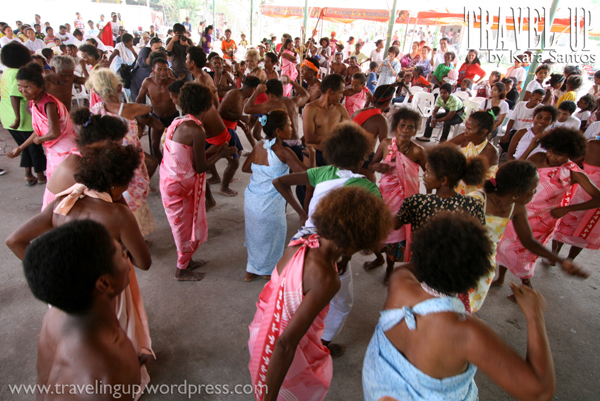
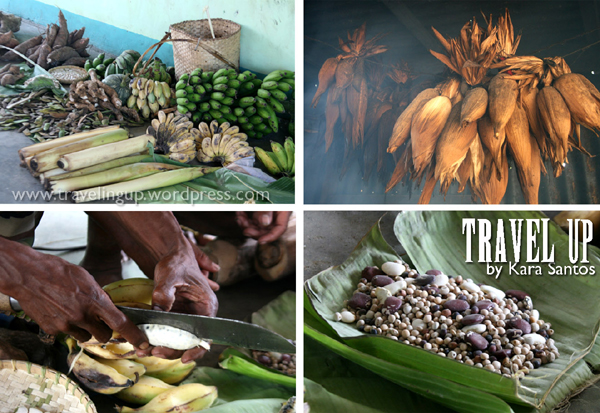
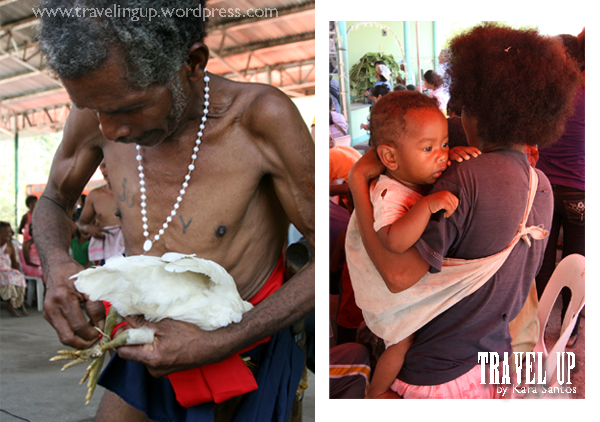
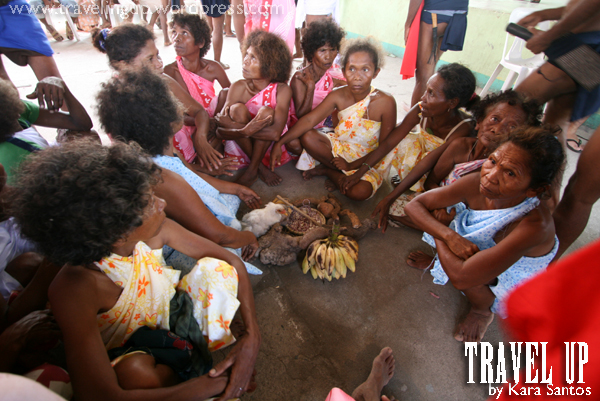
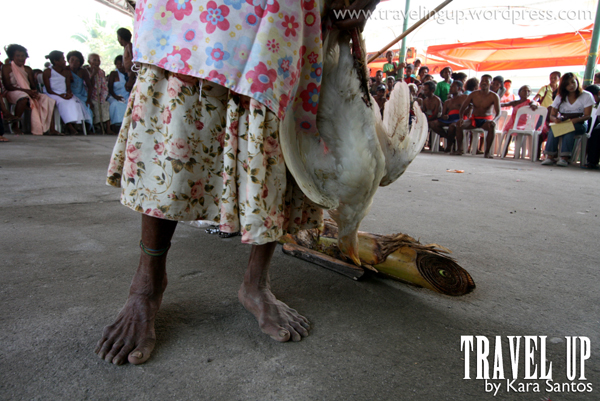
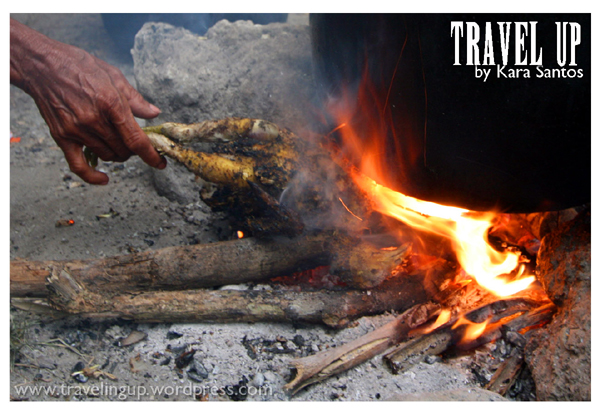
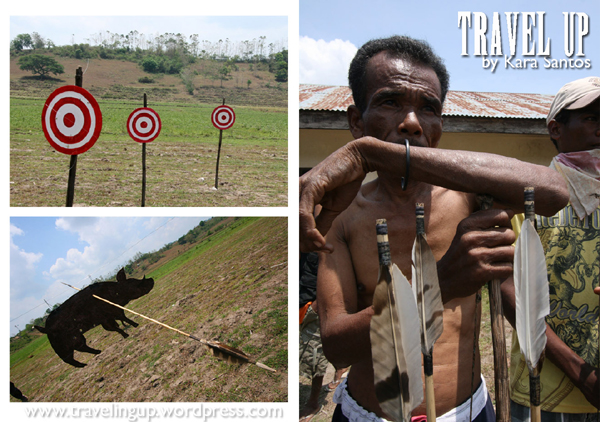
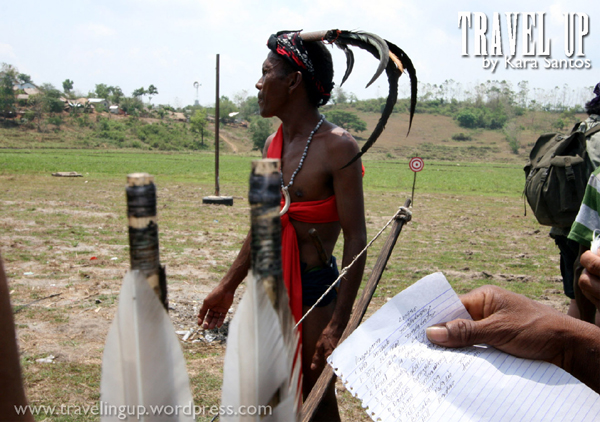
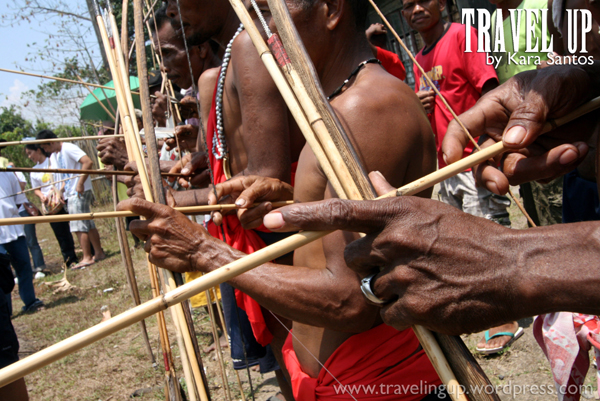
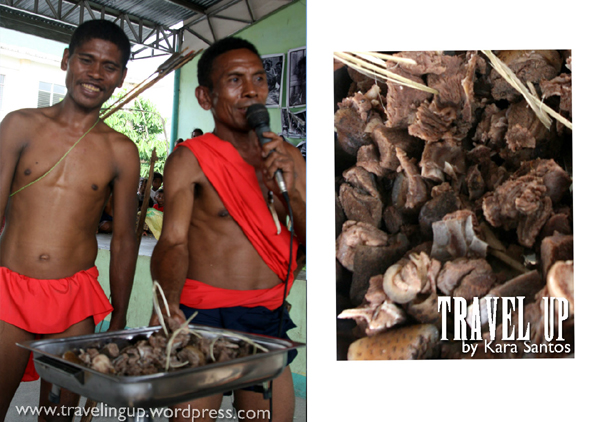
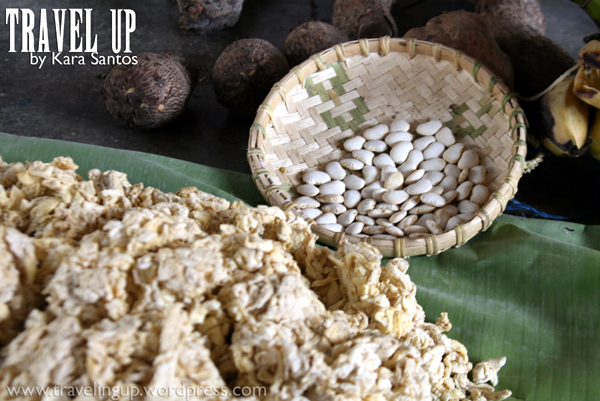
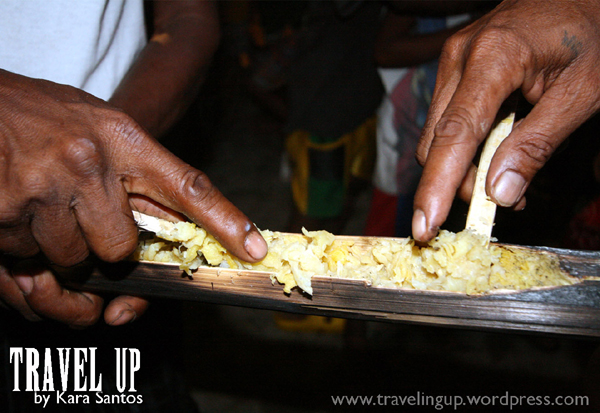
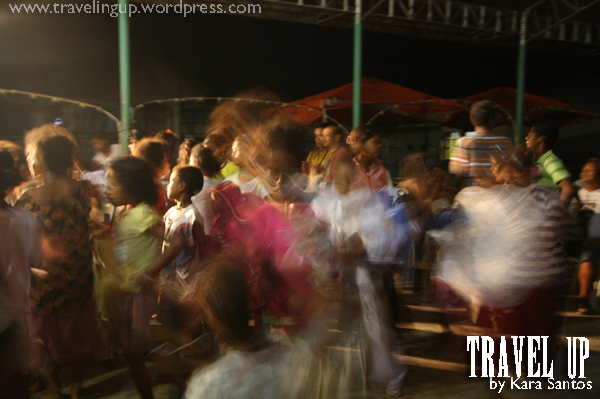
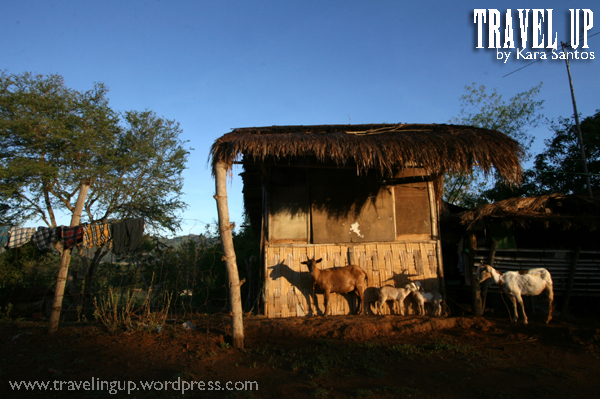
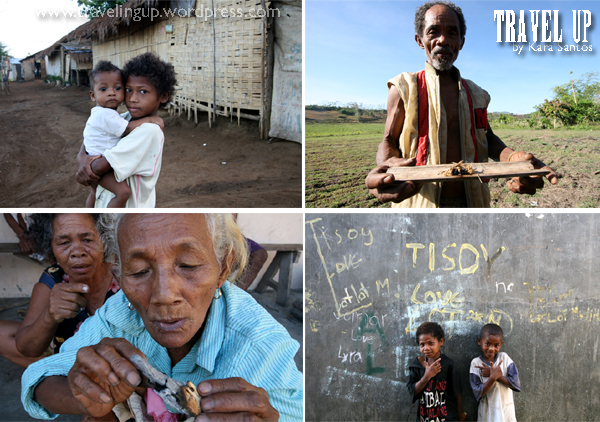


Classic. Rich in culture. Nice post ms.kara.
Thanks Renevic! You can just call me Kara. The “Ms.” makes me feel old ;p
you’re very lucky to see and experience this awesome food festival indeed!
Very informative post about another aspect of the traditions and simple way of living of the Aetas. Great post Ms. Kara 😛
Hi Chyng. Yup, felt really lucky to witness this event. Next year ulit. 🙂
Haha. Kulit mo, Marky :p Pero thanks.
Kara, really like this post. Pretty unique-especially the kalot. I know little about the Aeta community but I do someday want to visit a tribe and live with them for a couple of days. Love the photos too.
Thanks Grace. Before this visit, I knew very little about the Aeta community too. Am just glad they were wiling to share all their customs with us “unat.” Their customs really haven’t really been written about much.
Ang swerte mo to be a part of this. You get to experience the richness of the Aeta culture and their food. Galing galing! 🙂
Matutuwa ang mga Ayta na may mga unat na bukas matuto sa kanilang buhay. Ibabahagi ko ang lahat ng mga sinulat mo. Sama ka sa amin sa bundok kasama ng mga babae sa tunay na pagkuha ng labet at iba pang pagkaing-gubat!
Hi lakasngtrip. Yes, was really lucky to be a witness to this historic event. 🙂 Thanks for dropping by here!
Hi Jane. Salamat sa pag-imbita sa amin doon nung April at sa lahat ng impormasyon na nabahagi mo tungkol sa kanilang kultura. Sabihin niyo lang kung kelan kayo ulit aakyat sa bundok! 🙂
nice!
thanks web! 🙂
I’m so jealous. By far, the best travel-related food blog I’ve ever read. Beautifully written, very informative and educational, stirs the senses and appreciation of a tribal culture, very eloquently presented to showcase a heretofore unknown (to me and I bet, many others) facet of Philippine culture. Bravo, Kara!
Hi Lili. Thanks so much for the compliment. There are really so many stories about the rich culture of the Philippines just waiting to be told. I’m just glad that I can share the experience and see that other like-minded people appreciate it as well. 🙂
This is very inspiring.. Ang galing , I am so glad that you been part of that event. Iba talaga ang galing at lahi ng Pinoy… Kudos Kara!
Hi Chino. Thanks for dropping by here. Inspiring talaga yung experience 😀 Really happy to have been a witness to the event.
I just love this post! This is very rich in culture!
Hi Ding. Thanks for visiting here. It’s cool that you focus on heritage and culture in your blog 🙂 Will be checking out your posts!
You are welcome, Kara! will be checking out your blog more often, too. Cheers!
I love this post. Everytime I watch those rituals ng mga tribo, tumitindig talaga balahibo ko. Parang it’s so beautiful and dapat mapreserve talaga ‘to. 🙂
I agree Renz 🙂 This is the first time they’ve held this kind of festival but I think organizers plan to hold similar events in the future 🙂
Nice post! 🙂
Thanks, Shalum! 🙂
oks kara, sorry, noted =)
Great experience, Kara! Really love your post! A photo essay, indeed! Congrats to the max! Well deserved award!!! Extra ingat na lang sa mga biyahe mo… God bless you more 🙂
Thanks Tito Roy for your kind words and for visiting my blog 🙂